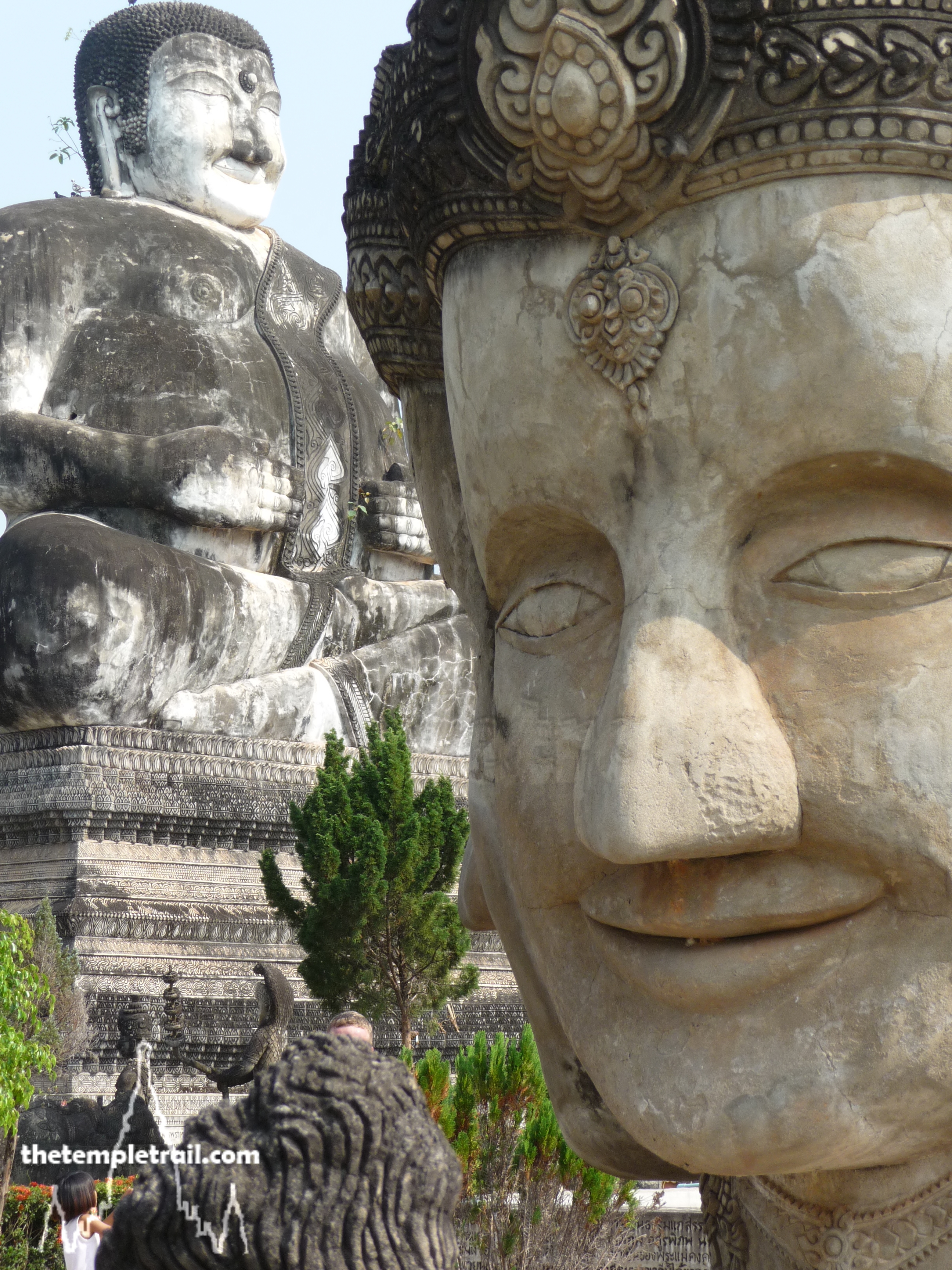Your xe ôm (motorbike taxi) flies through the ancient streets of the Old Quarter passing hawkers trying to pass off nylon as silk. The narrow streets are disorienting and you feel like you have been taken up in a whirlwind. Breaking through to a more open space you approach a large body of water. To your left lies Hồ Tây (West Lake). A causeway splits off a section of the water and you veer down a dilapidated piece of tarmac around it. Hồ Trúc Bạch (Truc Bach Lake) is a pretty, but stagnant sight and crossing a short bridge you arrive on the island of Ngũ Xã. Famed for its bronze workers, it once supplied Hanoian temples and palaces with wonderful bronze statues. As you get off the xe ôm and allow your legs to adjust to the stillness, you take in the shady streets of one of the prettiest parts of Hanoi.
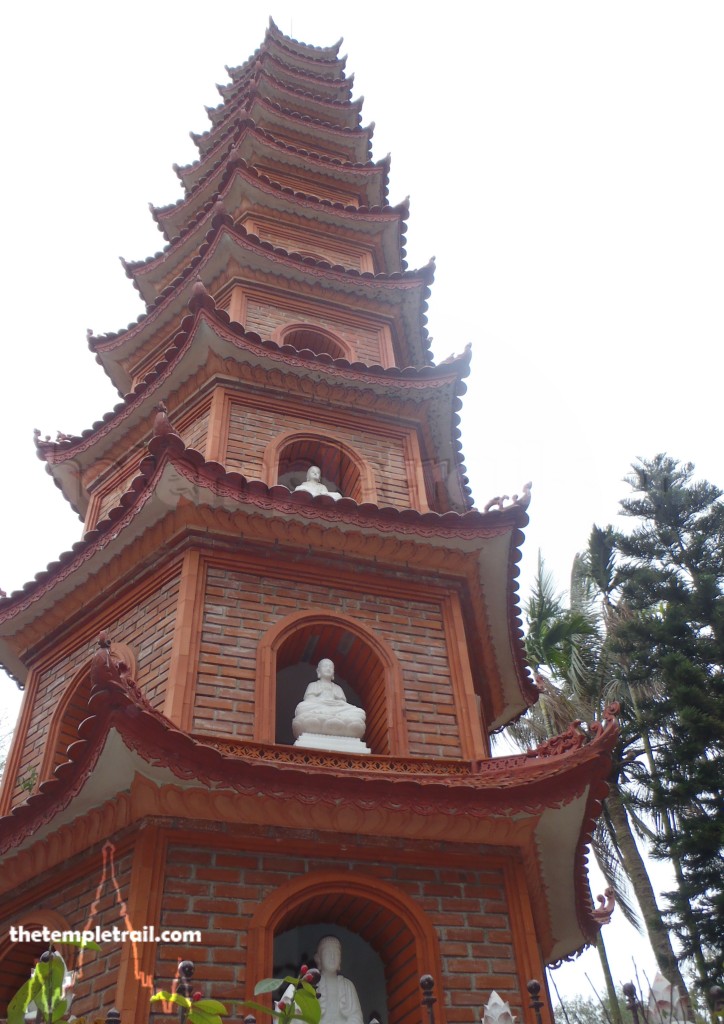
The first thing that hits you is the aroma of phở cuốn and phở chiên phồng and your nostrils are tantalized by the mouthwatering morsels. Sitting on a small stool at a table that barely comes to your knees, you eat the soft rice noodle rolls and the crisp fried rice noodle squares in gravy. The repast readies you for the three locations you are here to see. You pay your bill and from the corner of Ngũ Xã street, you head down to a pretty little temple, Chùa Thien Quang. The name Chùa denotes it is a Buddhist site (pagoda) and stepping through the gate, you are in a small courtyard that fronts the main hall. The yellow painted building has a set of worn out steps that have felt countless feet tread upon them. Putting one foot above another, you follow the trail that has been blazed before you.
You stand on a porch that has two alcoves to either side of it. Ahead of you is the main chamber. Making your way to the right, you come into a small shrine to Liễu Hạnh Công (Princess Lieu Hanh) and some other female figures. Each of them wears a different colour. Liễu Hạnh wears red the other two blue and green. This shrine is a Đạo Mẫu (mother goddess cult) shrine. The practice of worshipping the mother goddesses harks back to folk religion rituals and the Red River region had cults based around immortals in its early history. Đạo Mẫu was banned by the government until it relaxed its rules during the Đổi Mới reform period. The originally agricultural cult has steadily increased in popularity and where you stand is the location of lên đồng (spirit medium possession) rituals. The primary ceremonies for the cult are performed through female mediums who channel the spirits of the goddesses. Were you here on a holy day, you would have been witness to noisy trance-induced ritual antics.
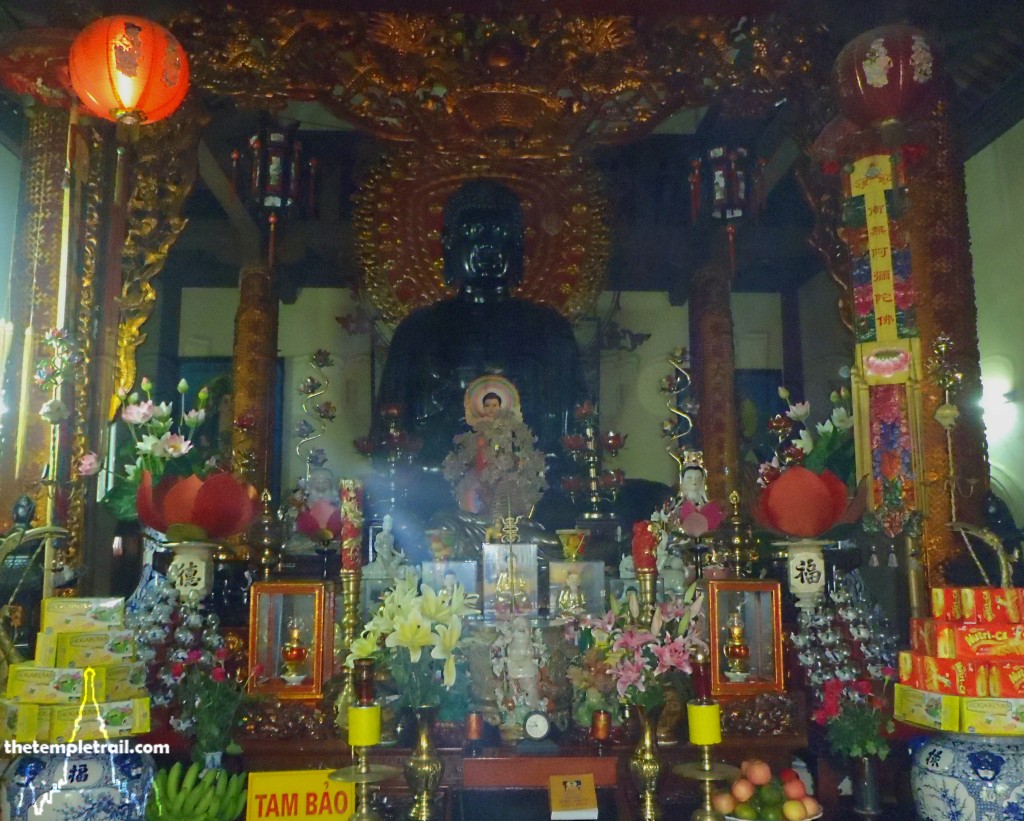
Leaving the shrine, you head to the main chamber. Entering the darkness, you are in the presence of a large bronze figure. Seated on his lotus, A-di-đà Phật (Amitābha Buddha) cuts an impressive silhouette against the soft lighting. Cast over four years between 1948 and 1952, the almost four-metre tall statue is imposing. It sits on a lotus throne with 96 petals and an eleven-and-a-half-metre circumference. The casting technique is a secret held by a few master craftsmen from Ngũ Xã and results in a seamless hollow bronze statue. It is a masterpiece and is the largest bronze Amitābha statue in Vietnam.
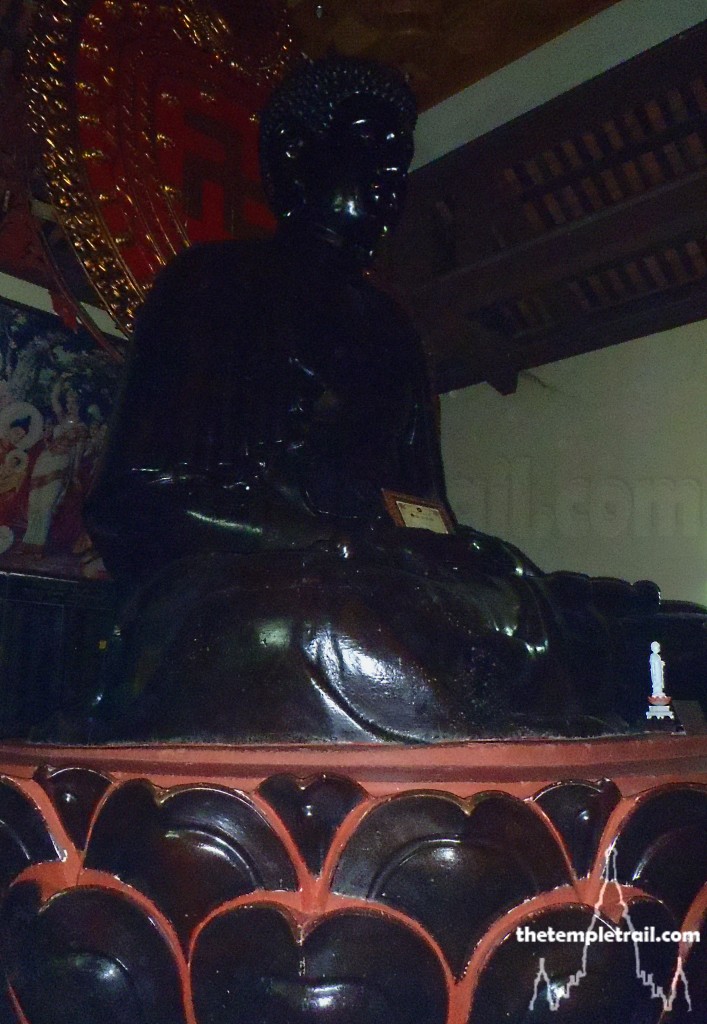
Exiting the small, but well formed temple, you head down the street to the bridge that takes you off the island. Before crossing it, you are tempted by the café that preempts it. Sitting down on another short plastic chair, you savour the thick sweet strong cà phê nâu đá (iced coffee with condensed milk) while looking out onto the calm surface of Truc Bach Lake. The coffee perks you up and out of your post prandial stupor. Standing up, you cross the bridge and circle around the lake to the beginning of Thanh Niên Road (the dividing causeway). You veer to your left and away from the lake for a few metres towards a small, but significant temple.
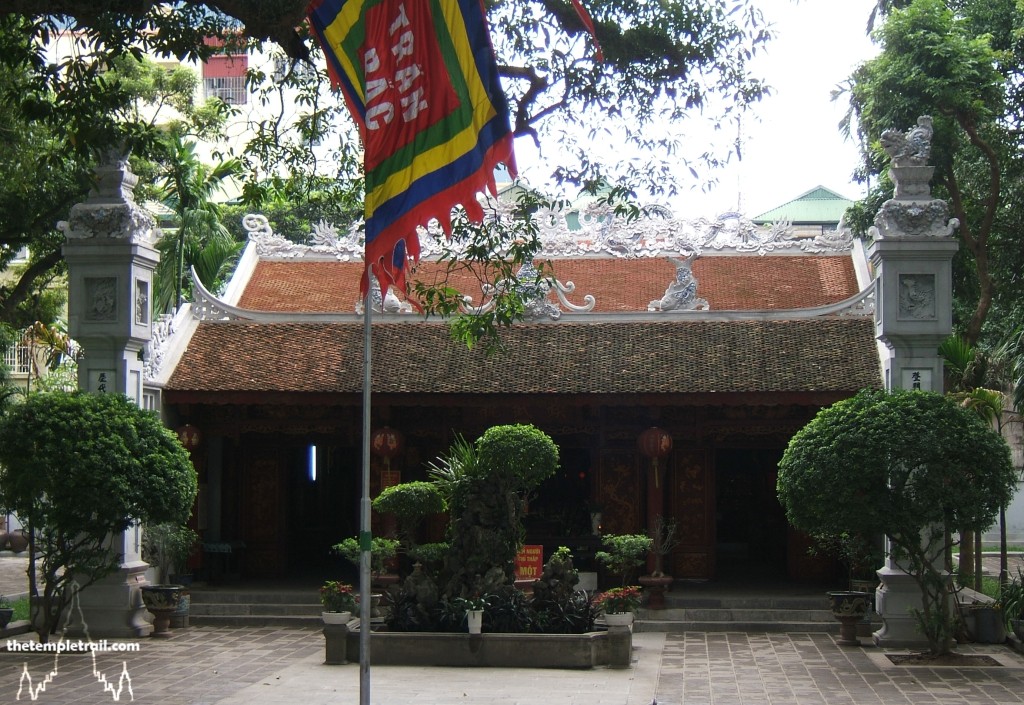
Đền Quán Thánh was considered to be so important in the past that you had to dismount from your horse if you passed its gate. Being a Đền, it is a Taoist temple and was founded in the early 11th century by the legendary Vietnamese king Lý Thái Tổ. It honours a god that protects the city of Hanoi and remains very much a part of local people’s worship. Passing through the entrance gate, you enter a courtyard that contains very little. Elephant statues stand either side of you and look at you as you process towards the simple looking hall that awaits your arrival at the other end of the yard. You enter the building and after seeing some ritual weaponry and other artifacts, you turn your attention to the rear chamber of the hall. Before you is another bronze behemoth from the Ngũ Xã craftsmen.
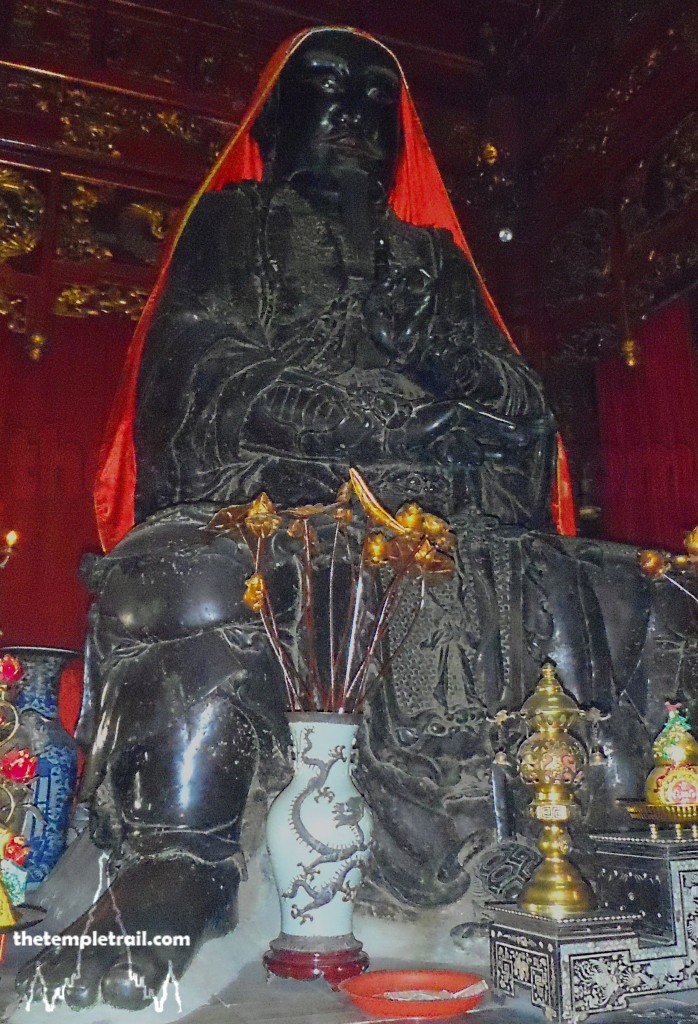
The original name, Trấn Vũ Quan (Tran Vu Temple), clearly stated who the temple was dedicated to. Trấn Vũ is an imposing figure. His name in Chinese is Xuán Wǔ (Dark Warrior) and he is revered from Mongolia to Guangdong; he is a patron of martial artists. He is the Taoist King of the North and the positioning of this temple was designed to protect the city on its northern extreme. There are three sister temples at the other cardinal directions around the city (Đền Bạch Mã in the east, Đền Voi Phục in the west and Đền Kim Liên in the south). People come to pay homage to the black bronze statue that was presented to the emperor Lê Huy Tông by the Ngũ Xã artisans in the mid-17th century. The almost four-metre tall statue depicts the deity holding a sword that is said to have belonged to the Chinese immortal Lǚ Dòngbīn. Around the sword a serpent coils and turtle supports it: these are his symbolic animals. The master craftsman, Trùm Trọng, who created the statue, also has a place in the temple and his statue can be found in the main chamber. It is believed that Trấn Vũ helped the ancient Hùng Vương (Hung King) defeat invaders and supernatural beings. The Hung King founded Văn Lang (the first Vietnamese empire) and his dynasty lasted more than 200 years. The modern Hanoians trace their roots to the Lạc Việt people of the period and so the site remains important to the local people. The temple is particularly popular at Tết (New Year), when people come to pray to the god who can control the elements and has supremely powerful magic under his control. After getting the benefaction of the mysterious warrior, you head back out to the courtyard.
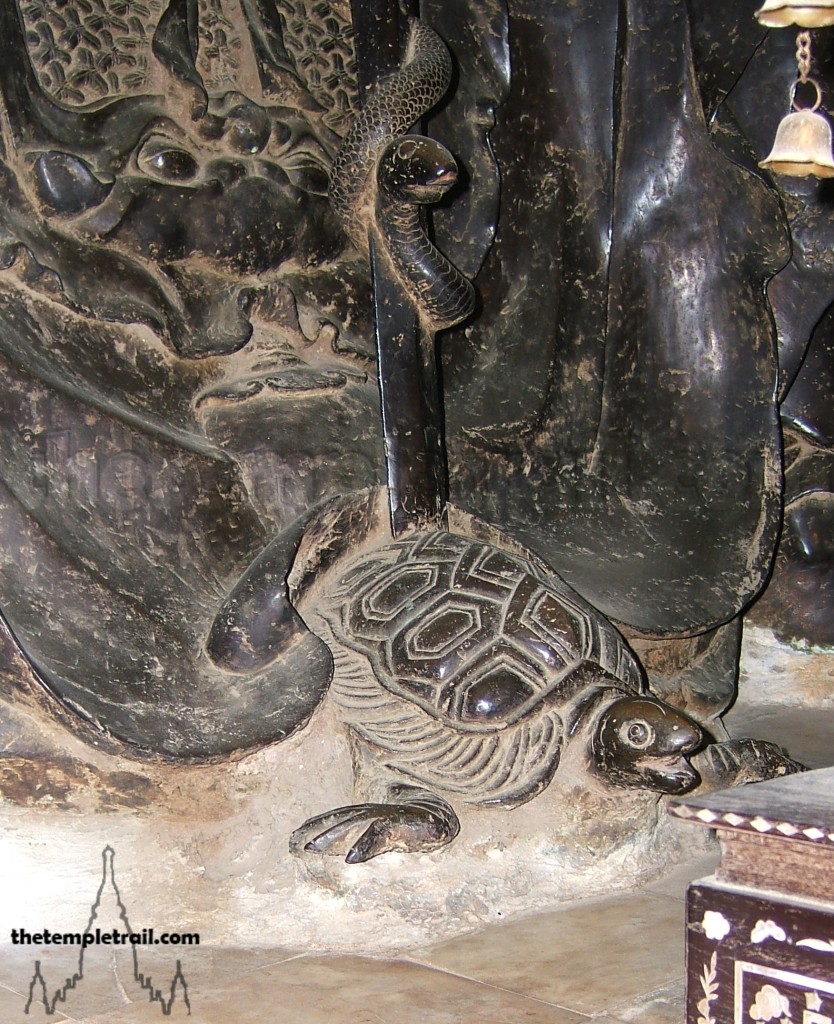
Exiting back onto the road under the shade of a massive banyan tree that has stood there for countless years, you return to the causeway. Cutting between the two lakes, you are crossing the divide. Truc Bach Lake was once part of West Lake, but it was divided with a Cổ Ngư (dyke) in the 17th century in order to provide easy fishing grounds for the local people. Truc Bach is the lake that ex-presidential candidate John McCain crashed into during the Vietnam War after being shot down. The causeway has an artistic marker that commemorates this and features a relief of a forlorn looking USAF pilot (Tchn Sney Ma Can – McCain). As you get to the centre of the causeway, you cross the road and stand on the threshold of another island that is now connected to the transportation system of modern Hanoi.
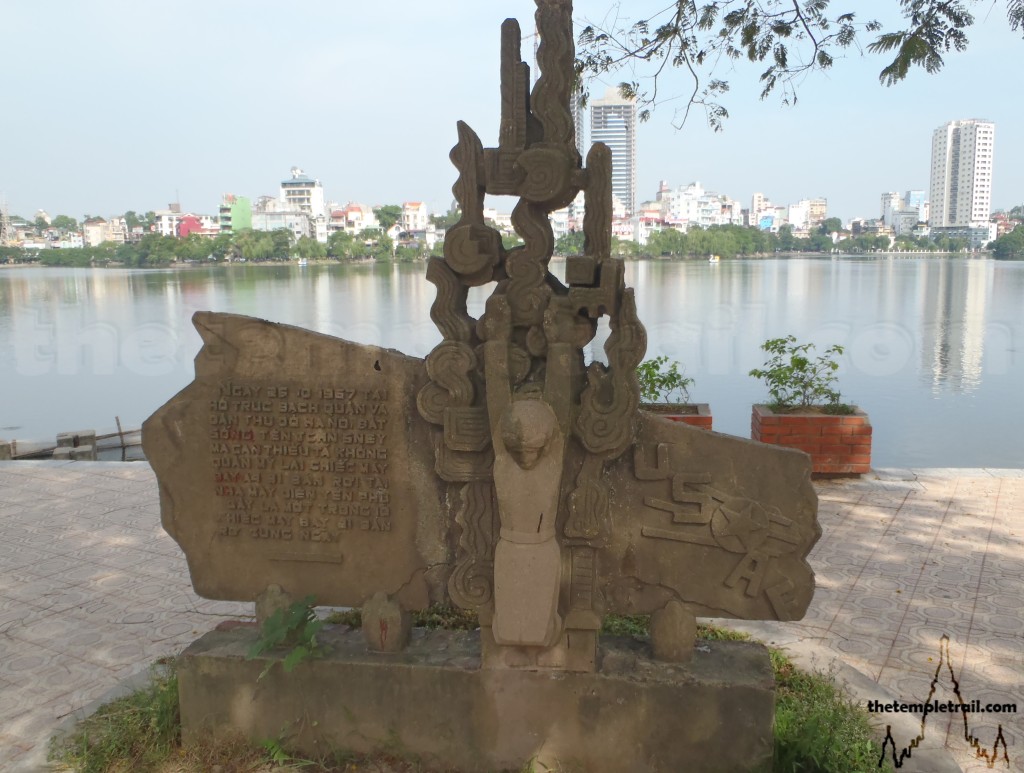
Once a pleasure island for the emperors of Vietnam, the island was converted to a Buddhist temple called Chùa Trấn Quốc. The original site of the temple was founded in the sixth century on the banks of the Red River by the emperor Lý Nam Đế and the locals will tell you that it is the oldest temple in Hanoi. The current temple was relocated in the early 17th century to the spot you stand at now; Kim Ngư (Golden Fish) Island. Walking towards the compact compound, you come to the yellow gates and pass through into the lush leafy sanctuary. The front part of the temple has a series of funerary stupas of important monks. Like a miniature forest of brick, the place is a little disorienting. Towering above them all is the main stupa; Bảo tháp lục độ đài sen (Lotus Stupa). It is 15 metres tall and small white statues of Amitābha look down to meet your gaze and usher you into the Western Pure Land from 11 storeys. The nine storey finial that crowns it is studded with precious stones. Near to the stupa is a Bodhi tree that was presented as a gift from India in 1959. The tree that provides you with some shady respite is a cutting of the tree in Bodh Gaya.
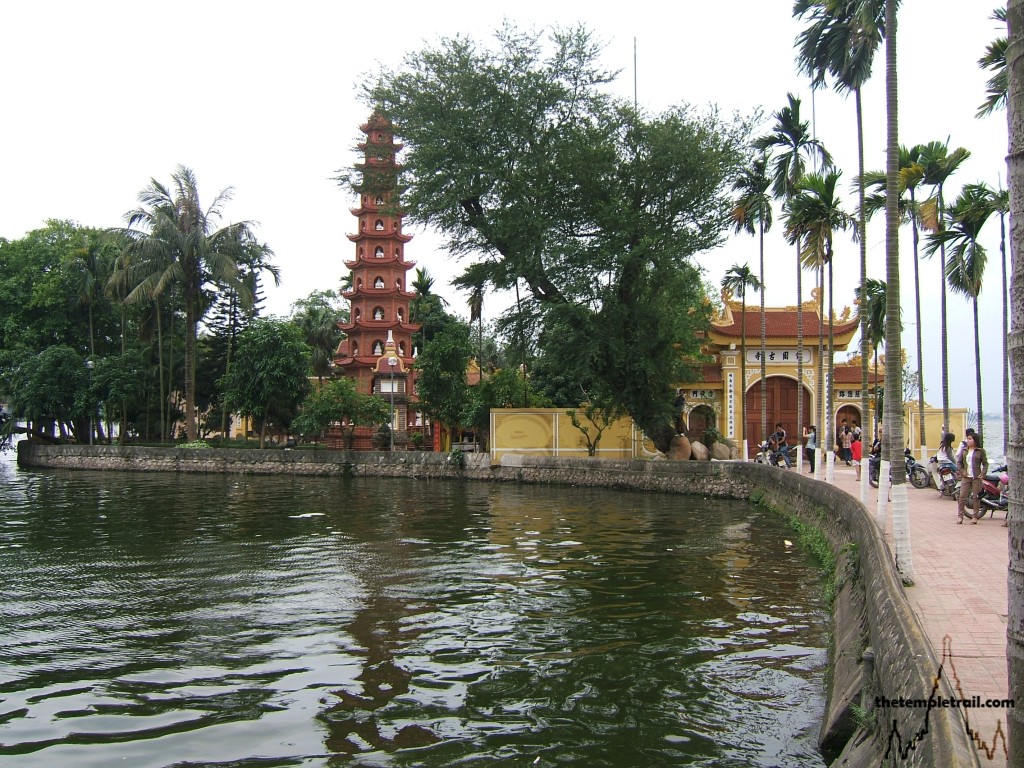
The main temple layout is in the traditional Vietnamese Buddhist shape of an 工; the three sides each representing the Buddhist trinity. Among the clouds of incense a small bearded statue of Bodhidharma, the father of Thiền (Zen) Buddhism, peers out of the darkened hall. His influence can still be felt all over East Asia, and no less so here, where the Zen teachings are still transmitted by Vietnamese monks like the outspoken Thích Nhất Hạnh. The temple is a golden chariot riding on the shimmering lake and you take a few brief moments to absorb the stillness of the place and the powerful imagery the sun, water and architecture create.

The sun glints off the lakes as you retreat back down the causeway. Walking back towards the mayhem of the banks and the smell of lâu ếch (frog hotpot) and steamed ốc (snails), you tread steadily as motorbikes weave around you. You have experienced all of the quiet you will get today. The noisy and exciting bustle of Hanoi welcomes you with open arms. The only thing you can do is embrace the pandemonium and perhaps sit down with a cold glass of bia hơi (fresh beer) and watch the world go by in fast forward.
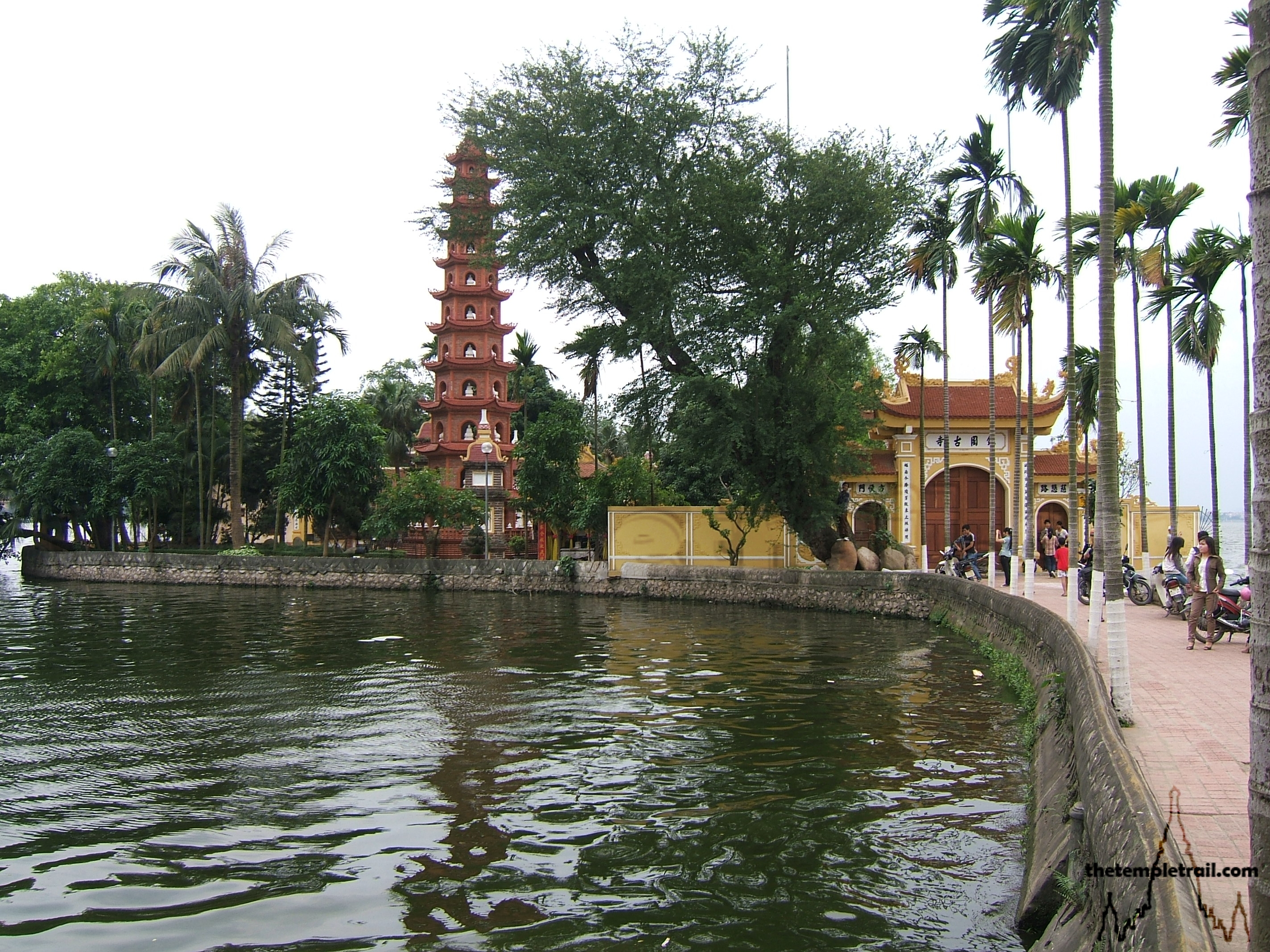
 Santuario de Atotonilco
Santuario de Atotonilco